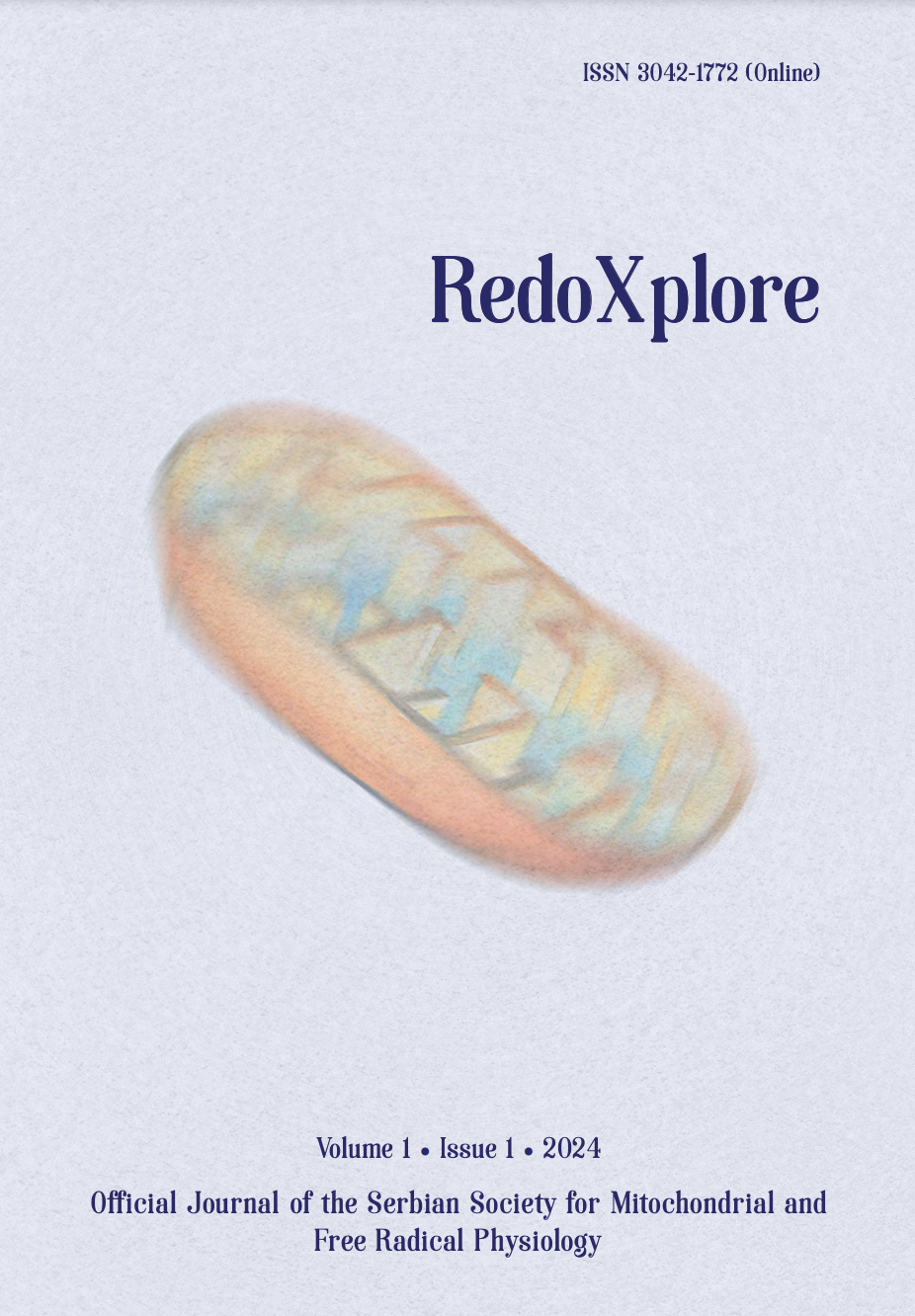
More articles from Volume 1, Issue 1, 2024
REDOX AND METABOLIC REPROGRAMMING OF BREAST CANCER CELLS AND ASSOCIATED ADIPOSE TISSUE - THE CORNERSTONES OF ADAPTIVE TUMOUR BEHAVIOUR
INSULIN MODULATES MITOCHONDRIAL STRUCTURAL AND FUNCTIONAL MOSAICISM IN BROWN ADIPOCYTES
NITRITE MITIGATES OXIDATIVE BURST IN ISCHEMIA/REPERFUSION IN BRAIN SLICES
NITRIC OXIDE, SUPEROXIDE AND PEROXYNITRITE – REDOX REGULATION OF THE CARDIOVASCULAR SYSTEM BY NITRO-OXIDATIVE STRESS AND S-NITROS(YL)ATION
DIETARY NITRATE AS PIVOT ON THE GUT MICROBIOTA-HOST REDOX COMMUNICATION
NRF2/AMPK AXIS IS REQUIRED FOR REDOX-MEDIATED PHASE RESETTING OF MUSCULOSKELETAL CLOCKS UPON ACUTE MECHANICAL LOADING
Department of Musculoskeletal and Ageing Science, Institute of Life Course & Medical Sciences, University of Liverpool , Liverpool , United Kingdom
Department of Musculoskeletal and Ageing Science, Institute of Life Course & Medical Sciences, University of Liverpool , Liverpool , United Kingdom
Department of Musculoskeletal and Ageing Science, Institute of Life Course & Medical Sciences, University of Liverpool , Liverpool , United Kingdom
Department of Musculoskeletal and Ageing Science, Institute of Life Course & Medical Sciences, University of Liverpool , Liverpool , United Kingdom
Editor: Bato Korac
Published: 29.08.2024.
Keynote lectures
Volume 1, Issue 1 (2024)
Abstract
In mammals, a multi-oscillator circadian system generates behavioural, metabolic and physiological ~24h rhythms, with tissue-specific physiological cues enabling local circadian phase adjustments. Emerging work has shown musculoskeletal tissue homeostasis and mechanical responses to be under circadian control. Nuclear factor erythroid 2-related factor 2 (NRF2), a master regulator of the antioxidant response, is a clock-controlled target in several peripheral tissues and also modifies circadian gene expression and rhythmicity. However, the role of NRF2 in mechanical loading-induced changes in musculoskeletal tissues has yet to be elucidated. Wild-type (WT) and Nrf2 KO mice of young (3-6m) or old age (18-20m) harbouring a PER2::luciferase clock reporter were subjected to acute mechanical joint loading of the right leg (peak load 9N, 40 cycles of 10sec) during light phase whilst the contralateral (left) leg served as a non-loaded control. Musculoskeletal tissues were collected for analysis 4 hrs later. Real-time bioluminescence imaging of clock gene reporter activity, protein and mRNA levels of target markers, NRF2/ARE transactivation and genome-wide RNAseq analyses were undertaken. We show that acute mechanical loading in WT mice led to a decrease in gene expression of key members in the negative and auxiliary feedback loops of the molecular clock, associated with the phase-resetting of PER2::luc protein oscillations in the skeletal muscle and a knee joint. This was accompanied by a significant increase in the markers of oxidative burden as well as gene expression and protein abundance levels of antioxidant enzymes. Moreover, acute mechanical loading induced a significant activation of the redox-sensitive energy sensor, AMP-activated kinase (AMPK), known to be involved in molecular clock resetting. We thus examined whether the above acute mechanical responses were dependent on NRF2 activity. Nrf2 KO mice showed an altered response to acute mechanical loading, characterized by blunted circadian resetting and antioxidant responses, and altered AMPK activation. Furthermore, dampened responses to acute mechanical signals were found in ageing WT mouse musculoskeletal tissues, whilst AMPK activator treatments in WT mice induced circadian resetting and antioxidant responses in an NRF2-dependent manner. In conclusion, these data demonstrate that AMPK/NRF2 axis is required for relaying acute mechanical signals to the musculoskeletal system by controlling redox-mediated phase resetting of musculoskeletal clocks and antioxidant protection, which have important implications in understanding biomechanical mechanisms involved in musculoskeletal tissue maintenance in health and with ageing.
Citation
Copyright

This work is licensed under a Creative Commons Attribution-NonCommercial-ShareAlike 4.0 International License.
Article metrics
The statements, opinions and data contained in the journal are solely those of the individual authors and contributors and not of the publisher and the editor(s). We stay neutral with regard to jurisdictional claims in published maps and institutional affiliations.






